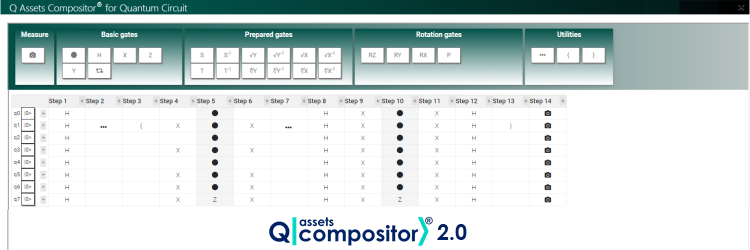José Luis Hevia, Mario Piattini and Guido Peterssen, members of aQuantum, have published the article “Q Asset Compositor® 2.0: functionalities and scalability for developing industry-ready quantum circuits with QuantumPath®” in The QPath Blog.
In this article, the authors announce the release of Q Assets Compositor® 2.0, the new version of this QuantumPath® technology to agnostically and visually create quantum gate circuits a, which connect to the servers of quantum computer providers and retrieve the results.
This new version introduces a completely new visual editor for quantum gate circuits, providing an original component, designed and developed entirely for QPath®, which naturally replaces the fork that had been custom-developed from the Quirk project branch and that until now served efficiently for graphically prototyping qubit-limited circuits with QuantumPath®.
In the presentation of the release, the authors highlight that the main technological novelty of Q Assets Compositor® 2.0 is that it natively supports the development of quantum gate circuits without qubits limits, that these circuits can be visually displayed, manipulated and edited and that, integrated with the qSOA® API, supports the creation of dynamically scaled circuits, the limits of which will be determined by the available quantum hardware itself.
The authors also note that new Q Assets Compositor® 2.0’s quantum circuit designer, featuring spreadsheet-style row/column/cell design integrated with CORE QuantumPath®, is designed to offer enhanced functionality to make the process of engineering scalable quantum circuits more viable, making it easier for developers to make the leap from lab testing and exploration to real-world quantum circuit development.
QuantumPath®’s Q Assets Compositor® 2.0 opens a window to a new concept of the quantum gate circuit designer, capable of handling both the complexities of real-world dynamic management needs (variables, data, etc.) and the technological reality of the expected scaling rate of current and future QPUs, which is essential to provide greater protection for the industry’s investment in its developments.
You can read the full text of this article here.
You can see all the articles and other papers published by aQuantum here.


Recent Comments